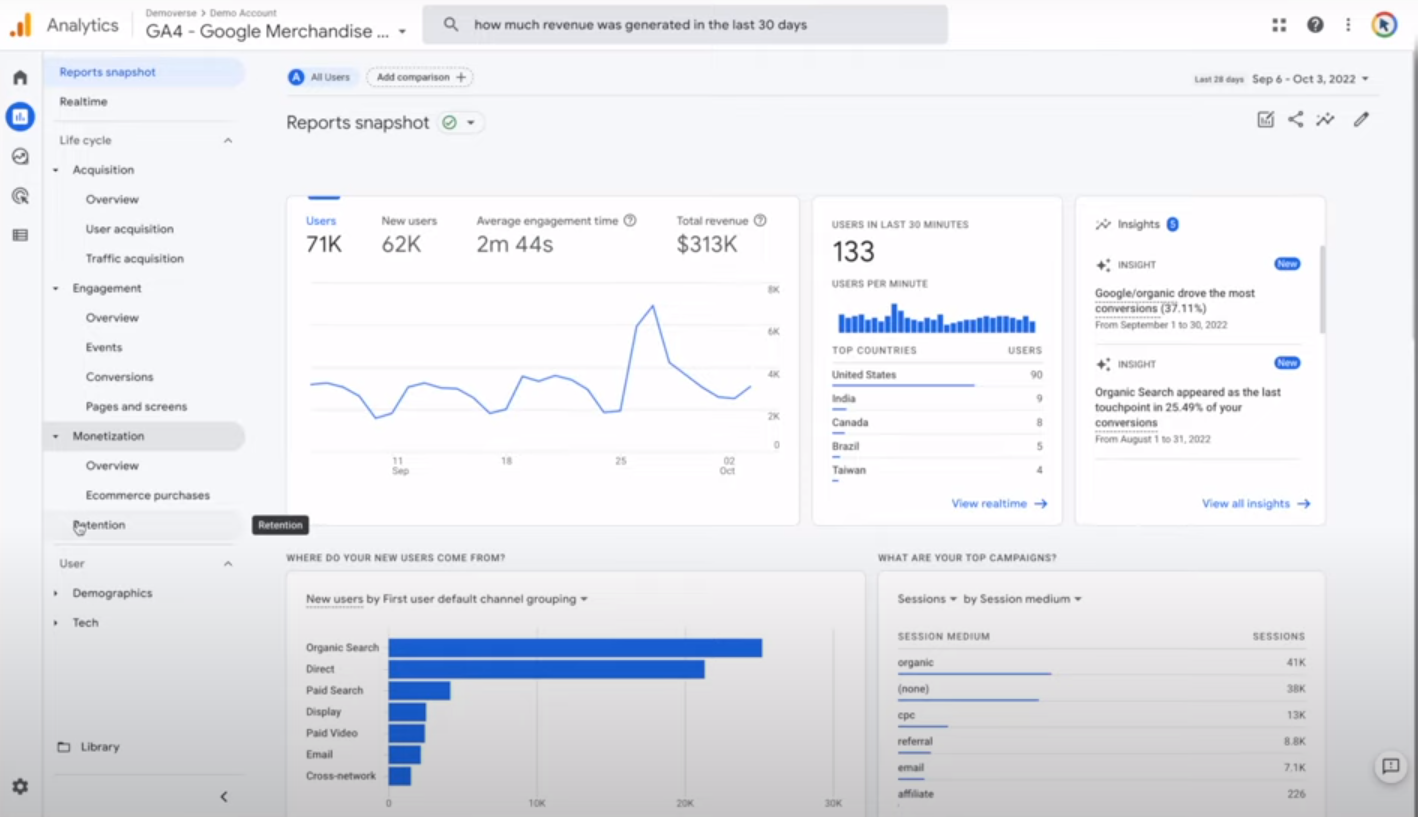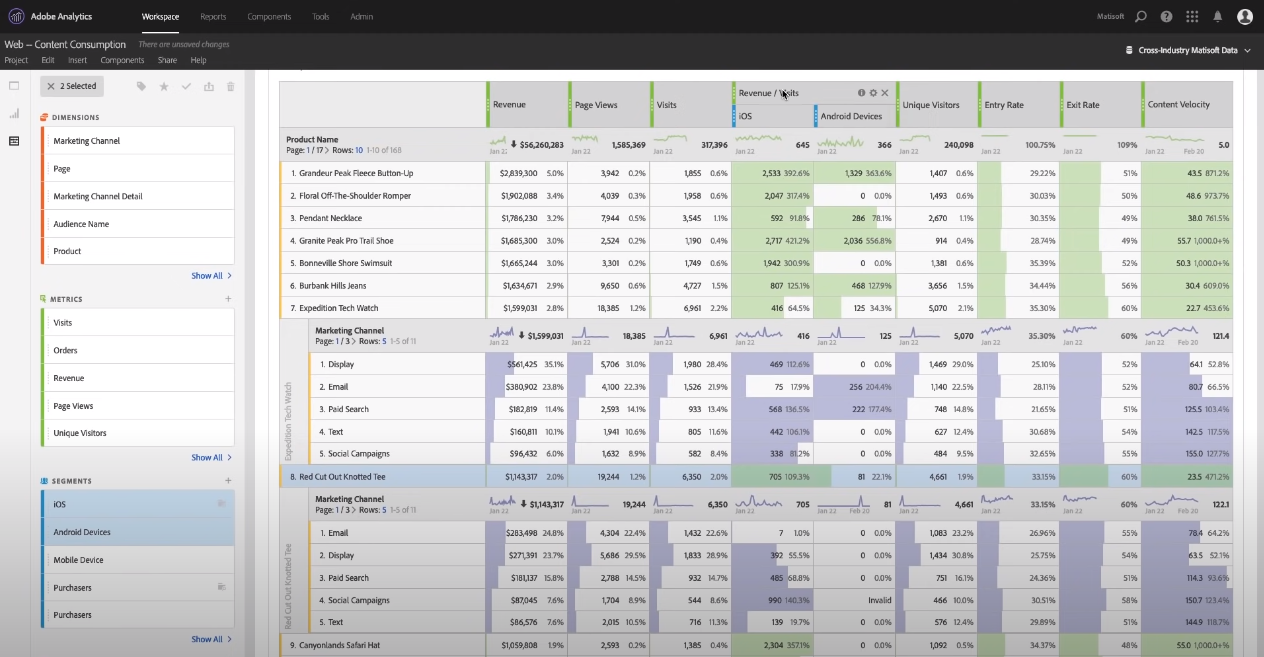Tracking website visitors is essential for any online business or organization. By monitoring and analyzing website traffic, you can gain valuable insights into how visitors interact with your website, identify areas for improvement, and make data-driven decisions to optimize your website's performance.
Tracking website visitors offers several benefits, including:
- Improving user experience: By tracking website visitors' behaviour, you can identify common pain points, such as slow-loading pages or confusing navigation, and address them to improve the user experience.
- Optimizing website performance: Tracking website metrics, such as page load times and bounce rates, can help you identify and fix technical issues that may be impacting your website's performance.
- Increasing conversions: By analyzing website data, you can identify patterns and trends in user behaviour that may lead to increased conversions, such as adjusting the placement of calls-to-action or optimizing landing pages.
Tools for tracking website visitors
There are many website analytics tools available, but some of the most popular options include Google Analytics and Adobe Analytics. These tools offer a wide range of features and advantages for tracking website visitors and analyzing website performance.
Google Analytics

Google Analytics is a free website analytics tool provided by Google that allows you to track and analyze website traffic. Some of the main features and advantages of Google Analytics include:
- Real-time data tracking: You can see how many people are currently on your website and what they are doing in real-time.
- Customizable reports: You can create custom reports based on specific metrics and dimensions to get a deeper understanding of your website's performance.
- Goal tracking: You can set up goals to track specific actions, such as form submissions or product purchases, and measure how well your website is achieving those goals.
- eCommerce tracking: You can track e-commerce transactions and revenue, as well as see which products are most popular and which channels are driving the most sales.
To set up website tracking using Google Analytics, follow these steps:
- Create a Google Analytics account and add your website as a property.
- Add the Google Analytics tracking code to your website. This can be done by adding the code snippet to your website's HTML code or using a plugin or tag manager.
- Set up goals and conversion tracking to measure specific actions on your website.
- Customize your reports to focus on the metrics that matter most to your business.
Adobe Analytics

Adobe Analytics is another popular website analytics tool that offers advanced features for tracking website visitors and analyzing website performance. Some of the main features and advantages of Adobe Analytics include:
- Advanced segmentation: You can create custom segments based on multiple dimensions, such as demographics and behavior, to get a more granular view of your website visitors.
- Real-time data visualization: You can create real-time dashboards and visualizations to monitor website performance and quickly identify trends and anomalies.
- Attribution modeling: You can use advanced attribution modeling to understand the impact of different marketing channels and touchpoints on your website's performance.
- Integration with other Adobe products: Adobe Analytics integrates with other Adobe products, such as Adobe Experience Manager and Adobe Campaign, to provide a seamless experience across your entire digital ecosystem.
To set up website tracking using Adobe Analytics, you will need to create an Adobe Analytics account and follow the setup instructions provided by Adobe.
Regardless of which website analytics tool you choose, tracking website visitors is an essential part of optimizing your website's performance and improving the user experience. By using data insights to make informed decisions, you can take your website to the next level and achieve your business goals.
Key website metrics to track
Tracking website metrics is an essential part of understanding your website visitors and improving your website's performance. By analyzing website data, you can identify patterns and trends in user behaviour, track progress towards your business goals, and make data-driven decisions to optimize your website's performance.
Here are some of the most important website metrics to track:
- Page views: This metric measures the number of times a page on your website has been viewed. Tracking page views can help you identify the most popular pages on your website and adjust your content strategy accordingly.
- Bounce rate: This metric measures the percentage of website visitors who leave your website after viewing only one page. A high bounce rate can indicate that your website's content or user experience needs improvement.
- Time on site: This metric measures how long website visitors spend on your website. Tracking time on site can help you understand user engagement and identify areas where visitors are spending the most time.
- Conversion rate: This metric measures the percentage of website visitors who take a desired action, such as filling out a form or making a purchase. Tracking conversion rate can help you optimize your website for specific business goals and identify opportunities for improvement.
By tracking these metrics, you can gain valuable insights into your website visitors' behaviour and take steps to improve your website's performance. Here are some examples of how to use website metrics to identify and fix issues with your website:
- High bounce rate: If you notice a high bounce rate on a particular page, it may indicate that visitors are not finding the information they need or that the page is loading too slowly. To fix this issue, consider adjusting the page's content or design to make it more engaging and user-friendly.
- Low conversion rate: If your website's conversion rate is low, it may indicate that visitors are not being presented with a clear call-to-action or that the conversion process is too complex. To fix this issue, consider simplifying your website's conversion funnel and testing different variations to see what works best.
- Low time on site: If visitors are not spending much time on your website, it may indicate that your content is not engaging or that your website's user experience needs improvement. To fix this issue, consider adding more engaging content or improving your website's navigation and design to make it more user-friendly.
Best practices for tracking website visitors
To effectively track website visitors, it's important to use best practices and follow proven strategies. Here are some tips and best practices to help you get the most out of your website analytics:
- Set up goals and events: Goals and events allow you to track specific actions on your website, such as completing a purchase or filling out a form. By setting up goals and events, you can track progress towards your business objectives and identify areas for improvement.
- Use UTM parameters: UTM parameters are tags you can add to your URLs to track where your website traffic is coming from. By using UTM parameters, you can identify which marketing channels are driving the most traffic to your website and adjust your marketing strategy accordingly.
- Segment data: Segmenting your website data allows you to analyze specific subsets of visitors and gain more insights into their behavior. By segmenting your data, you can identify trends and patterns that may be missed when looking at your data as a whole.
- Use website analytics to optimize user experience: Website analytics can provide valuable insights into how visitors are interacting with your website. By using tools like A/B testing, heatmaps, and session recordings, you can optimize user experience and increase conversions.
- A/B testing allows you to test different versions of a page to see which version performs better. By testing different variations of a page, you can identify which design or content elements are most effective in engaging visitors and driving conversions.
- Heatmaps allow you to see where visitors are clicking, scrolling, and spending the most time on your website. By analyzing heatmaps, you can identify areas where visitors are most engaged and adjust your website's design and content accordingly.
- Session recordings allow you to see exactly how visitors are interacting with your website. By watching session recordings, you can identify user pain points and areas where visitors are getting stuck, and make adjustments to improve their experience.
By following these best practices and using website analytics to optimize user experience and increase conversions, you can make data-driven decisions that will help your website succeed.
In summary, tracking website visitors is essential for understanding user behaviour and improving website performance. By using website analytics tools and tracking key metrics, you can identify areas for improvement and make data-driven decisions that will help you achieve your business objectives.
At e-dimensionz Inc, we offer a range of website development, SEO, and advanced tracking implementation services. Our team of experts can help you set up and optimize your website analytics, as well as provide recommendations on how to improve your website's user experience and increase conversions.

